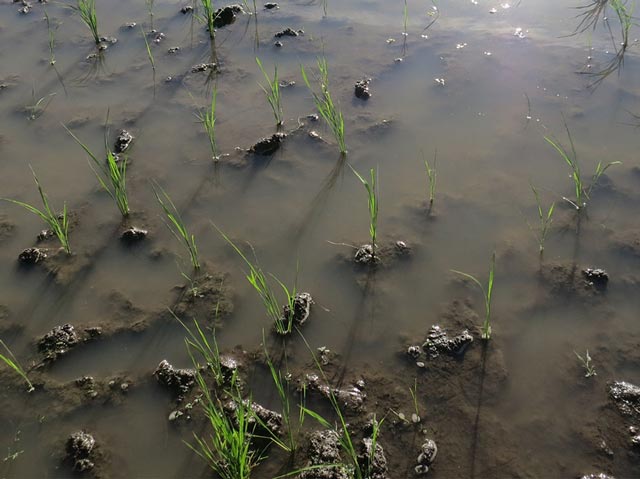Seed too deep
What it does
When seeds are planted too deep, plants have poor growth, poor emergence, low vigor, and low crop stand. There is also a tendency to have more weeds than crop.
Why and where it occurs
The problem occurs in wet and/or direct seeded fields where seed is planted too deep.
How to identify
Check the field for the following symptoms:
- poor crop establishment
- low plant vigor
The pattern of damage varies with the method of seeding. It may be in lines if machine-seeded, more general across the field if seed has been broadcasted or may be patchy if seed falls in areas with softer soil.
Various problems affect crop establishment. These are cloddy soil, seed too deep, soil too soft at seeding, poor emergence in low spots in fields, heavy rainfall at seeding, soil crusting, poor seed quality, low seed rate, water stress, muddy water at seeding, clogged seeder and/or pests such as ants, birds and rats that remove seed at planting.
To confirm cause of problem, check or ask a farmer about seed depth.
Why is it important
Good crop establishment lays the foundation for good yield. The extent of the problem depends on the planting method.
How to manage
- Ensure seed is planted within 0.5 cm of the soil surface.
- In dry direct-seeded fields, ensure that soil clod size is not too great or that soil is directly planted too deep.
- In wet direct-seeded fields, ensure that soil is sufficiently hard to hold seed within 0.5 cm of the surface.
